In 1336 the Sangama brothers, Harihara I and Bukka Raya I, established the Vijayanagara Empire in south-central India, which flourished for three centuries before disappearing at the hands of the Deccan sultanates in 1646. The name of the empire comes from the name of its capital, Vijayanagara (city of victory ), in the state of Karnataka.
It is situated on the banks of the Tungabhadra River, and was founded on an earlier settlement called Hampi that included a pilgrimage center for Shiva devotees and Hindu temples.
The empire favored the arrival of communities of different beliefs such as Muslims and Jains, which together with the Hindus gave rise to a mixture and abundance of multi-religious monuments with mutual influences. Still, the city was a bastion of Hindu values resisting the advance of Muslim sultanates from the north.
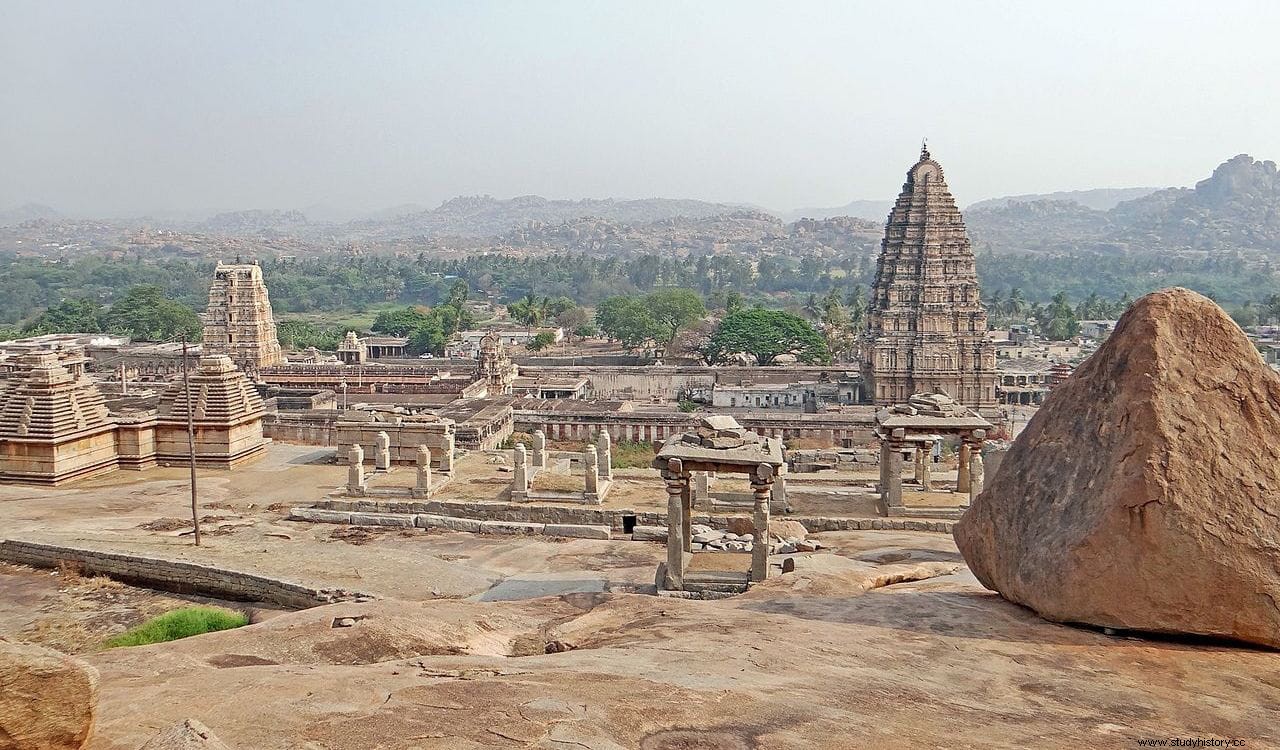
According to the chronicles of Persian and European (mainly Portuguese) travelers, Vijayanagara was a prosperous, wonderful and grandiose city, which amazed for the number of temples and monuments it housed, which came to be more than 140.
In fact, around the year 1500 it was the second largest city in the world, only behind Beijing, extending over an area of 650 square kilometers. From the news of these travelers it is estimated that the population was around 500,000 inhabitants at that time.
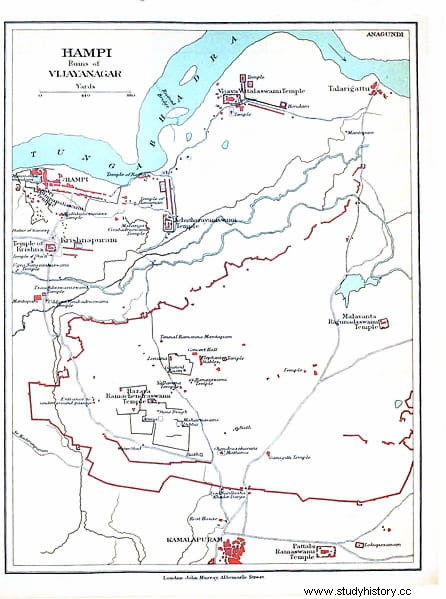
As the Persian traveler Abdur-Razzak wrote, the city is such that the eye has not seen nor the ear has heard of any place like it on earth . When he visited in 1440 he saw seven levels of fortifications before reaching the gates of the royal palace. Surrounding it, according to Robert Sewell, were multiple arcaded galleries, bazaars, shops, public baths, elephant stables, creeks and streams flowing through carved stone canals, temples and palaces. There were fortresses on every hill.
The entire city was full of gardens, according to the Italian Nicolo Conti, who visited it in 1420, and reached a circumference of sixty miles (almost 97 kilometers), all of it surrounded by enormous walls.
The Portuguese Paes, who arrived in 1522, said that it was as big as Rome, full of charm and wonder with its innumerable lakes and canals and fruit gardens.
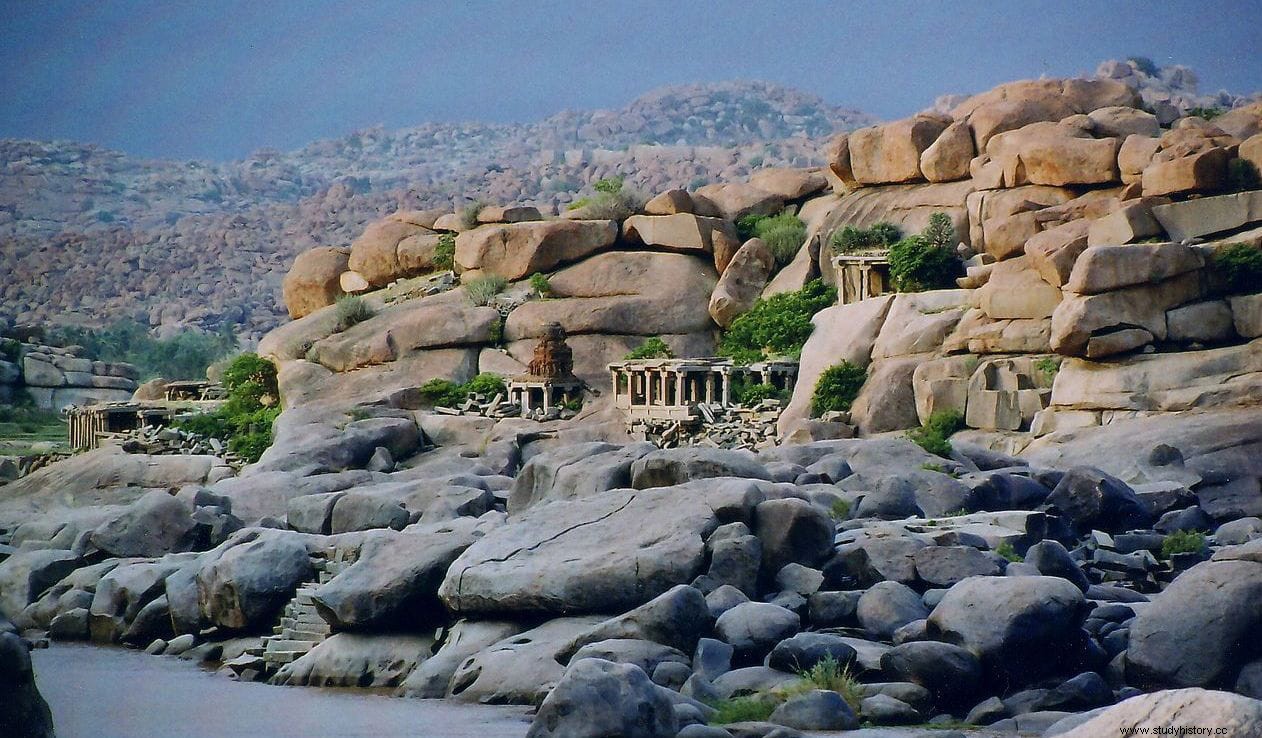
In addition, thanks to an advanced irrigation system, the city was self-sufficient as the majority of the population dedicated itself to agriculture within the perimeter of the walls. This allowed it to withstand long sieges, which were frequent during the three centuries of the empire's life. Up to 23 reservoirs and water tanks are still visible today, in addition to numerous retaining dams and wells.
The southern area of the great metropolis was rich in iron ore and hematite. Five sites from the Vijayanagara period have been found there, with their corresponding foundries.
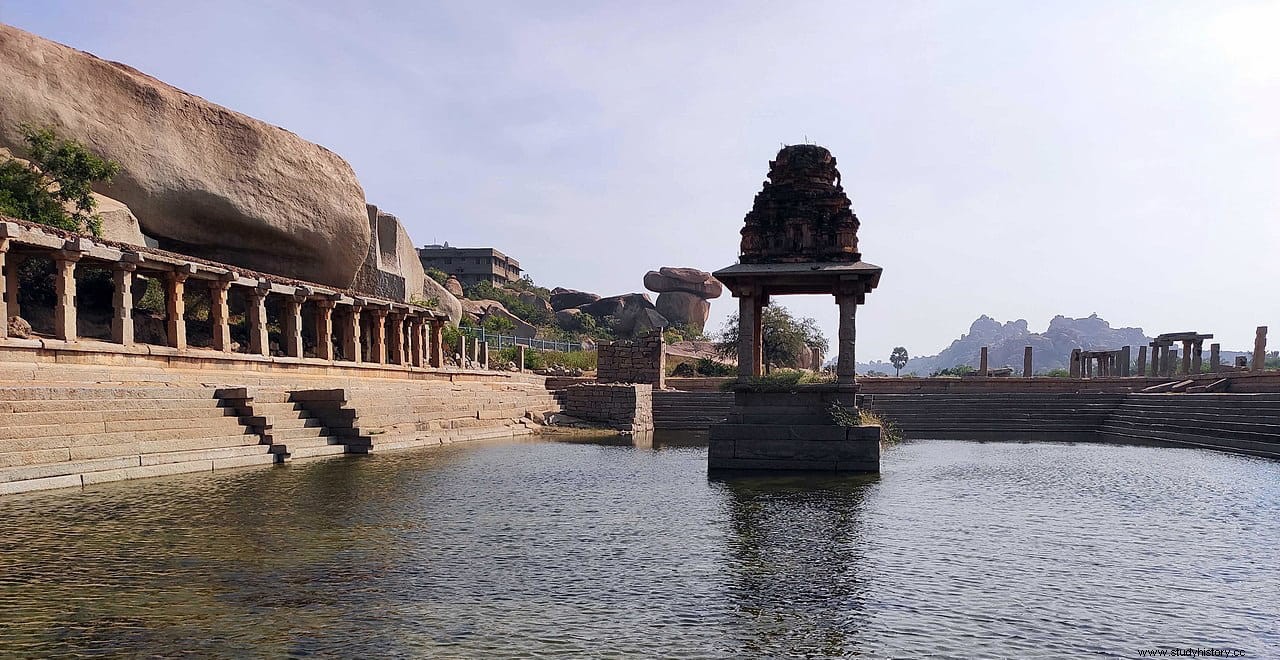
The current archaeological site is divided into two zones, the Sacred Center and the Royal Center. The Sacred Center stretches along the southern shore, and is characterized by the highest concentration of religious structures, many predating the empire. On the contrary, the Royal Center (or urban nucleus ) stands out for its stately structures, both civil and military, such as roads, an aqueduct, water reservoirs, mandapas, markets, and monasteries.
A third area, the Islamic Quarter, is located between the northern slopes of Malyavanta Hill and the Talarigatta Gate. It was where military officers and high-ranking Muslims had their homes.
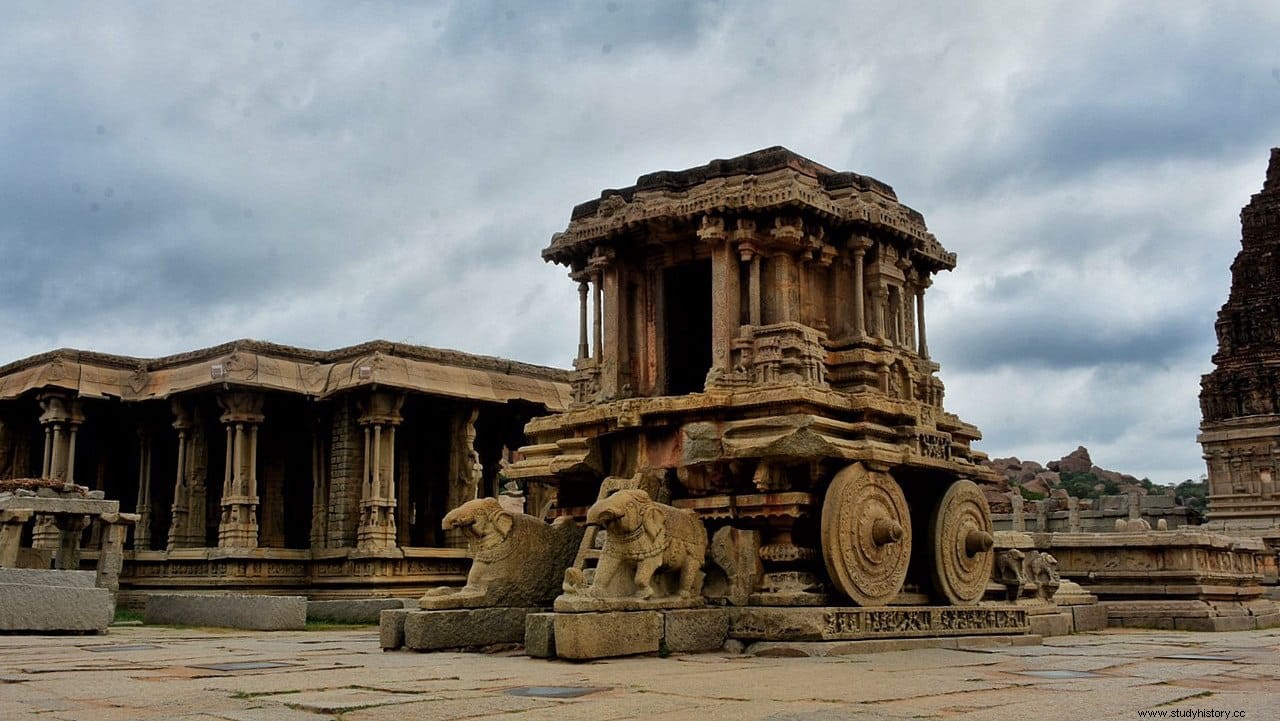
In order to oppose the northern sultanates, the Vijayanagara empire allied itself with the Portuguese, who already controlled Goa. But they could not avoid being defeated at the battle of Talikota in 1565. The capital was taken, destroyed and burned, remaining in ruins to this day.
However, the Italian Cesare Federici, who visited it two years after the battle, wrote that it was not completely destroyed, since the houses were still standing, although they were empty.
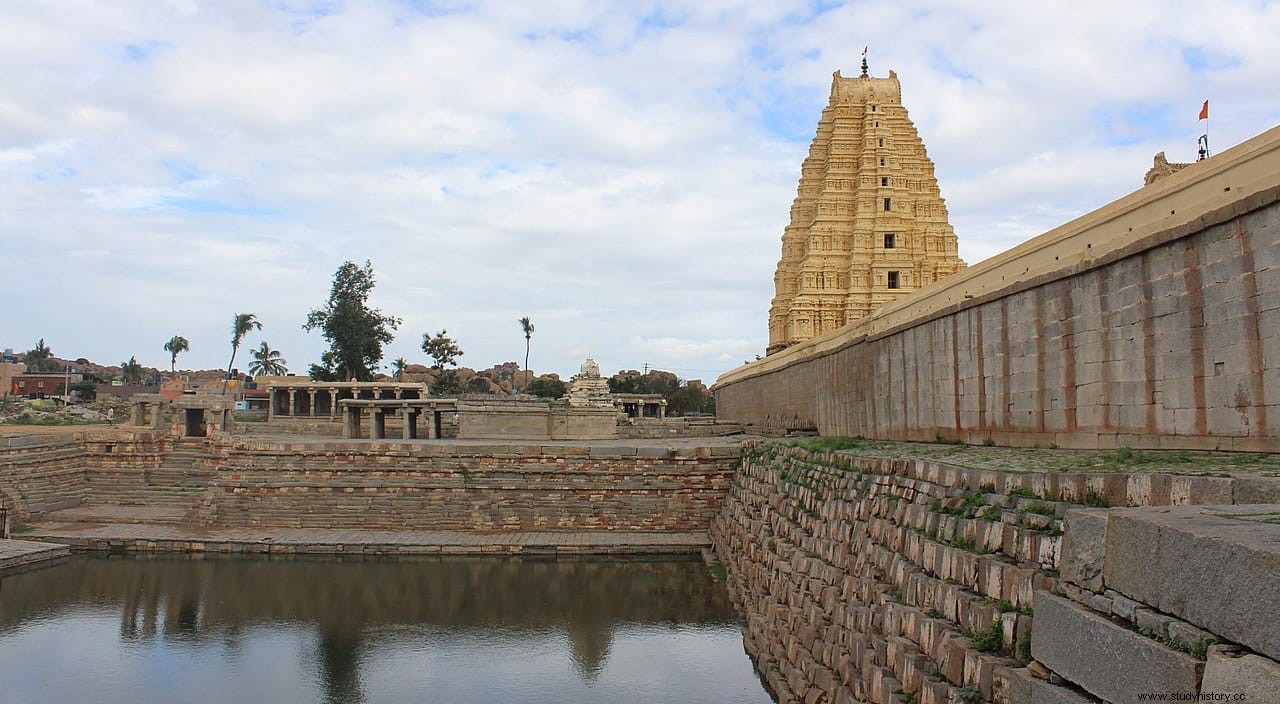
The surviving remains, mainly in the center of the city, have been declared a World Heritage Site under the name of Hampi Group of Monuments . There are about 1,600 monuments spread over an area of 41.5 square kilometers.
Fonts
UNESCO | Archaeological Survey of India | Vijayanagara Research Project | Burton Stein , The New Cambridge History of India:Vijayanagara | Wikipedia
